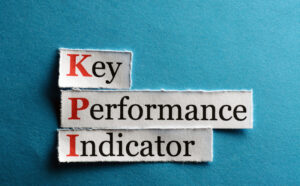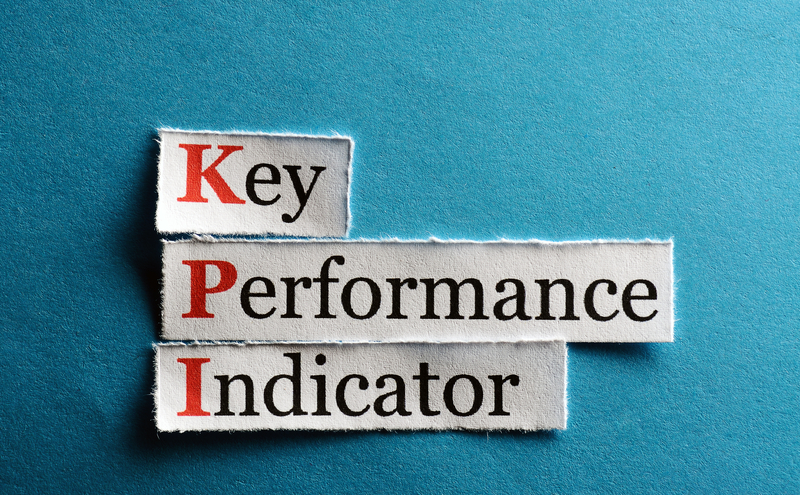Key performance indicators (KPIs) are parameters by which organizations monitor the success or development of every staff member.
All companies have them and most people have their personal KPIs connected with their annual or semi-annual or annual, too. Managers and recruiters use KPIs for measuring performance, and as a time and task management tool to track productivity.
Every company has different KPIs and managers evaluate their teams based on these indicators. And, if you are a recruiter and you never heard about KPIs, then you are in luck!
An organization is only as good as the people who work in it. Therefore, KPIs should be developed and managed by someone who understands their merits and shortcomings and can strike a balance between them.
Typical Recruitment KPIs
Probably, the well-known and very easy to track KPIs are:
- Number of submitted resumes;
- Time to fill;
- Number of placements; and,
- For agency recruiters, their KPIs are client calls/client meetings and the percentage of their commission, etc.
There are many other KPIs you can track. Below are some examples of the more important ones.
Application Completion Rates
If you need to fill out a four-page long registration, you’ll likely start feeling a little frustrated by page three, right? And what about your candidates?
This KPI indicator should be tracked by every company. Your long registration process could be the reason you’re not seeing enough candidates, and maybe because of that, good candidates are dropping out and leaving during the application process.
If you are not able to answer how many candidates are not finishing your registration and why they are leaving, you should start tracking it. If you track it, you can find any problem that your candidate could have with the registration form or with something as simple as a glitch on your career portal.
Whatever the case, keeping track of the application completion rate helps to investigate the drop-offs in your job application process. This could also include a variety of other reasons, such as inefficient optimization for mobile devices and too many input fields. Looking into these reasons might then allow you to change to an ATS or the development of a better web portal that makes for a smoother candidates/user experience.
From my personal experience, it’s important to see where you are losing candidates during the application process. If you identify these problems, and then you fix them, not only will you see more candidates in the pipeline, but you are also going to improve candidate experience.
Interview-to-Offer Conversion Rate
It is important to monitor the interview-to-offer ratio and offer-to-acceptance rate, because if you have been conducting interviews but not extending offers to candidates, then you need to look into why this is happening.
This could be an interesting indicator that could reveal that maybe your company is no longer attractive for candidates.
Maybe the new manager doing the interviewing is the person that is discouraging candidates because he is acting arrogant. Or, perhaps there is a difference between your expectation and that of the candidates. It could also be because there is a difference in culture, you are not competitive on the market (benefits or salary), or your competitors were hiring while you were waiting to get back to them.
Sources of Talent
It is important to know which sources offers up not only the most candidates but also the best candidates.
Knowing the right source is important because you can learn which one is helping you hire your top-performing employees and which is just costing you money. This will further help your hiring managers and leaders know where they should expend their resources in the future.
Every year you renew your contract with the job board that you’ve been using for years, and which their rep still claims is the “No. 1 job board in the country.” But, did you try to run a report on how many candidates you are getting from them?
Reports for the last three years could reveal that the number of candidates you get from them are dropping while their prices are growing. You should check how many people you’ve hired from them in the previous three years. When you do, maybe you will be surprised when you see the data.
Cost per Hire
This is one of the metrics that recruiters consistently rank as one of the most helpful in their planning.
Cost per hire helps show the relationship between recruitment efforts and the actual hiring of employees for an organization, and it can be easily understood by people who do not have a background in recruitment. Company leaders especially like this KPI as it ensures that recruitment efforts are feasible for the business while also taking into account the industry, size, and location of the establishment in question.
Mathematically, this KPI is expressed as: Cost per Hire = (External costs + Internal costs / Total Number of Hires)
Quality of Hire
As the manager, your responsibility is to balance the quality of candidates recruited with the costs incurred in the recruitment process.
In the assessment of a candidate’s quality — the quality of hire — parameters such as productivity (the length of time it took the recruit to get to an optimum performance level compared to the average time of their peers or predecessors), tenure (the length of time someone stays in the organization), scale (was there growth professionally and promotion internally?), and impact (contribution to the development of the organization) should be looked into.
Typical KPI Problems
Sometimes, the KPIs for the recruitment team are set up by managers who’ve never worked in recruitment or who don’t have much experience with it. Because of that, KPIs will not always reflect the current situation of the local market, and they can often go a long period of time before being updated.
The second problem is that the KPIs are sometimes set up without any previous analysis or plan.
KPIs don’t measure the true recruiting process, but only one small part of it (like only tracking the time it takes to fill a position or the number of hires). I hope that one day we will replace KPIs with Realistic Performance Indicators (RPIs), because the new indicators should be focusing on real performance and consider more things that reflect the current situation in the job market, the seniority of the role, and other typical indicators.
A KPI Riddle
I like riddles, and I have one for you.
You are the team leader of four recruiters. Your boss told you that the company is going through a crisis and you need to let one person go. The decision is up to you, so which person you will chose?
The first recruiter hired 12 candidates per year, the second hired 24, the third hired 28, and the last recruiter hired 36 candidates during the year.
Maybe if you see it in this format your decision will be easier.
- First recruiter – 12 hires per year;
- Second recruiter – 24 hires per year;
- Third recruiter – 28 hires per year;
- Fourth recruiter – 36 hires per year.
Which recruiter would you fire if you had to? Which recruiter do you believe is not performing at the same level as the others? (The answer to the riddle is at the end of this article)
Maybe this riddle was too easy for you and you decided to fire the first one, but hold on and let’s try one more.
You have a team of three recruiters:
- First recruiter – 30 hires per year;
- Second recruiter – 30 hires per year;
- Third recruiter – 45 hires per year.
Who would you pick to leave your team if you needed to choose one of them? Are you going to let go the first or the second one? Or what about the third one? Are they safe just because of the larger number of hires?
I know that’s not easy to answer this without some data, and if you answer based on very limited data, you could let a good recruiter go and keep the bad one. And yet lots of companies make this decision based only on the number of filled roles or the time it took them to fill a role as their only KPIs.
But remember: Making decisions without data is the same thing as making decisions based on wrong or irrelevant data.
Based on the things you know about the recruiters from the first riddle, your answer was likely to fire recruiter No. 1. But what if you start tracking other KPI data and not just time to fill and number of hires? If you start evaluating based on more KPIs like those I mentioned above, you will get a much different view of your team.
Answering the riddle
You chose to fire recruiter No. 1 from the first riddle, right? And what if I told you that you just fired the best recruiter on your team who was able to attract more talent than the others?
If you are only tracking the number of hires, you are only seeing that the first recruiter hired 12 candidates per year. But consider some additional parameters before you make that decision, like those I mentioned above. What if you also start to consider the number of referrals? If you do that, you can find out that these 12 candidates recommended 40 other new employees as referrals, and the other three recruiters hired them.
Without the right data or right performance indicators in place, you would never find out about this and potentially fire your best recruiter. This recruiter helped you hire 12 people, and these people helped you hire 40 more, or a total of 52 people out of 100 hired during the year.
So, 52 percent of all your hires were affected by recruiter No. 1 alone.
The same method could be applicable to the second riddle. Again, don’t focus only on typical KPIs, and always try to think outside the box. For the right decision, you will always need as much data as possible.
These two riddles are only examples, but in the end, just tracking the number of hires and not seeing the bigger picture could not only cost you a good recruiter, but it could also affect your hiring activities and overall number of hires.
Final thoughts
Recruiting is an important part of any business, because without people, there is no business. It’s vital that leaders pay close attention to its performance, especially if you don’t want to start losing good employees and be stuck with the low performers that were just lucky to get hired.
Even though there are many tools out there that could help you with reporting, such as a modern ATS, technology alone will not be enough to analyze and offer solutions.
If you want a to build a great team and have a good recruitment strategy, you must look at the goals you are striving to achieve and ensure that every member of the team understands the thinking behind the metrics, whether that is how they’re being measured, or how these metrics fit into the organization’s long-term growth plan.
Remember: Focusing only on one KPI, and evaluating the performance of your team members based on that one KPI could cost you a great recruiter.
Authors
Jan Tegze
Jan Tegze is Senior Recruiting Manager at SolarWinds, a company that “provides powerful and affordable IT management software to customers worldwide, from Fortune 500 enterprises to small businesses, managed service providers (MSPs), government agencies, and educational institutions.” He is also the author of the book Full Stack Recruiter: The Modern Recruiter's Guide, published October 2017. Jan has extensive experience in full life cycle recruiting, and broad knowledge in international recruiting, sourcing, recruitment branding, marketing and pro-active innovative sourcing techniques. Connect with him on LinkedIn or follow him on Twitter @jantegze .
Recruit Smarter
Weekly news and industry insights delivered straight to your inbox.





